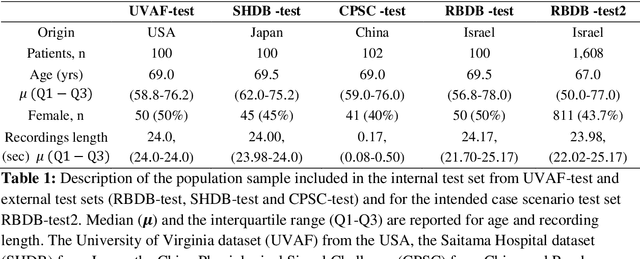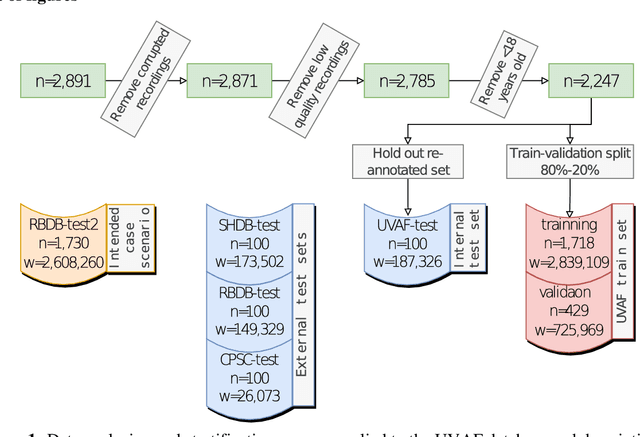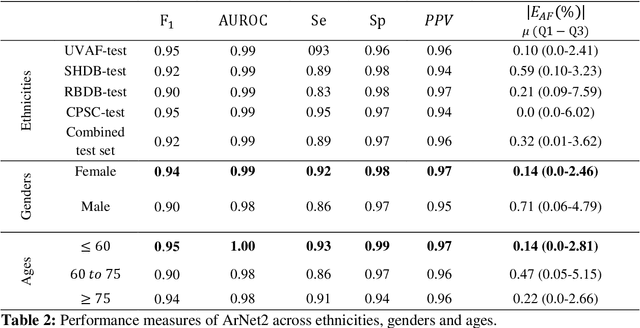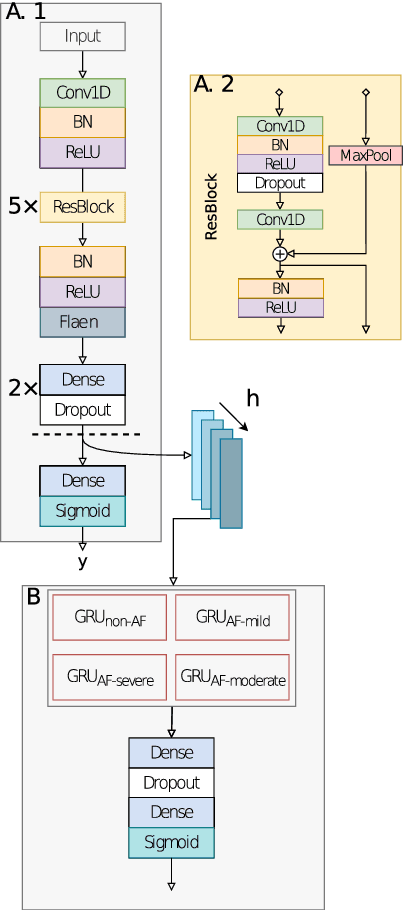Jean Marc Sellal
SHDB-AF: a Japanese Holter ECG database of atrial fibrillation
Jun 22, 2024Abstract:Atrial fibrillation (AF) is a common atrial arrhythmia that impairs quality of life and causes embolic stroke, heart failure and other complications. Recent advancements in machine learning (ML) and deep learning (DL) have shown potential for enhancing diagnostic accuracy. It is essential for DL models to be robust and generalizable across variations in ethnicity, age, sex, and other factors. Although a number of ECG database have been made available to the research community, none includes a Japanese population sample. Saitama Heart Database Atrial Fibrillation (SHDB-AF) is a novel open-sourced Holter ECG database from Japan, containing data from 100 unique patients with paroxysmal AF. Each record in SHDB-AF is 24 hours long and sampled at 200 Hz, totaling 24 million seconds of ECG data.
Generalizable and Robust Deep Learning Algorithm for Atrial Fibrillation Diagnosis Across Ethnicities, Ages and Sexes
Jul 20, 2022



Abstract:To drive health innovation that meets the needs of all and democratize healthcare, there is a need to assess the generalization performance of deep learning (DL) algorithms across various distribution shifts to ensure that these algorithms are robust. This retrospective study is, to the best of our knowledge, the first to develop and assess the generalization performance of a deep learning (DL) model for AF events detection from long term beat-to-beat intervals across ethnicities, ages and sexes. The new recurrent DL model, denoted ArNet2, was developed on a large retrospective dataset of 2,147 patients totaling 51,386 hours of continuous electrocardiogram (ECG). The models generalization was evaluated on manually annotated test sets from four centers (USA, Israel, Japan and China) totaling 402 patients. The model was further validated on a retrospective dataset of 1,730 consecutives Holter recordings from the Rambam Hospital Holter clinic, Haifa, Israel. The model outperformed benchmark state-of-the-art models and generalized well across ethnicities, ages and sexes. Performance was higher for female than male and young adults (less than 60 years old) and showed some differences across ethnicities. The main finding explaining these variations was an impairment in performance in groups with a higher prevalence of atrial flutter (AFL). Our findings on the relative performance of ArNet2 across groups may have clinical implications on the choice of the preferred AF examination method to use relative to the group of interest.
 Add to Chrome
Add to Chrome Add to Firefox
Add to Firefox Add to Edge
Add to Edge